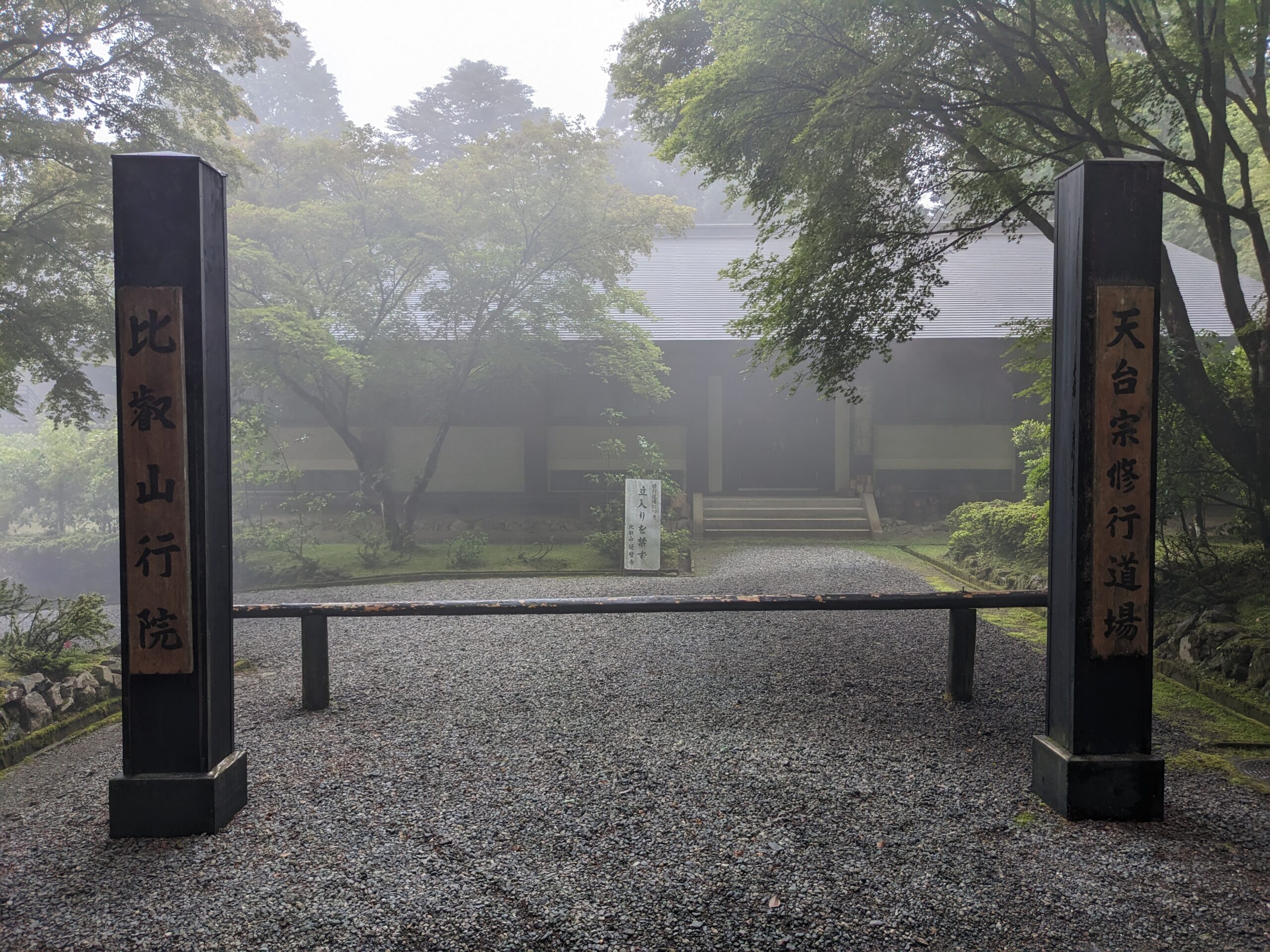I take refuge in the Three Jewels of the Whole Mountain of Hieizan.
Many tourists visit Enryakuji, the head temple of the Tendai sect located on Mt. Hiei to the northeast of Kyoto every year. For many, it is a peaceful detour away from the throngs who fill the streets of the ancient capital year round. Though it is only an hour or so by bus from Kyoto Station, it is a world away, and unbeknownst to most, even further than that.
Enryakuji has few uniquely impressive buildings, especially in comparison to those found in Kyoto and Nara. It does not have the polish or famous temple accommodations and cuisine of Mt. Kōya, a major center of the Shingon sect. The tourism infrastructure is limited and aged.
For those taking in the atmosphere and willing to walk the paths that cross the terrain, through ancient forests studded with “hidden” sites steeped in history, they might find something more. On those paths, away from the pilgrims and tourists, perhaps after climbing a steep slope and resting to catch one’s breath in the serene quiet under the dense canopy of trees where time seems to slow to a stop, one might glean a sense of what is actually happening on the mountain.
Enryakuji is a living center of Buddhist training. The temple actually encompasses the entire mountain. The most famous practice is the Sennichi Kaihōgyō, or 1000 Day Circuit Practice during which practitioners tread a circuitous pilgrimage route of some 30 km around the mountain or 80 km from the mountain into Kyoto or back each day for 1000 days over a seven year period, punctuated with a nine day practice when they go without sleep, food or water. Less well known and challenging in its own right is the Jūninen Rōzangyō in which a practitioner stays in retreat for twelve years at the tomb of Saichō. Others enter and remain on the mountain for other periods of three or one years during which they may undertake a one hundred day circuitous pilgrimage practice, or one of the 90-day practices described in Zhiyi’s Mohezhikuan: constantly sitting meditation, constantly walking meditation, constantly sitting or walking meditation, during which they do not sleep and only take breaks to eat and go to the bathroom. It is hard to believe, but these types of vigorous practices are still undertaken in this world of effervescent and unchallenging distractions.
All Tendai monks are required to complete a 60 day retreat at the Gyōin, the training monastery, located in the Yokawa precinct of Enryaku-ji. There, monks undergo training to learn basic Tendai practices and receive transmission of Mikkyō teachings, or Tendai Vajrayana. It is there that we enter and learn of the profound and subtle world perpetuated on those peaks and in those valleys.
The Buddha’s teachings endure through the medium of the mind, body and voices of practitioners. Since Buddha, Dharma and Sangha endure in an unbroken lineage on the mountain for over 1200 years, we take Refuge in the Three Jewels of the Whole Mountain of Hiezan.
